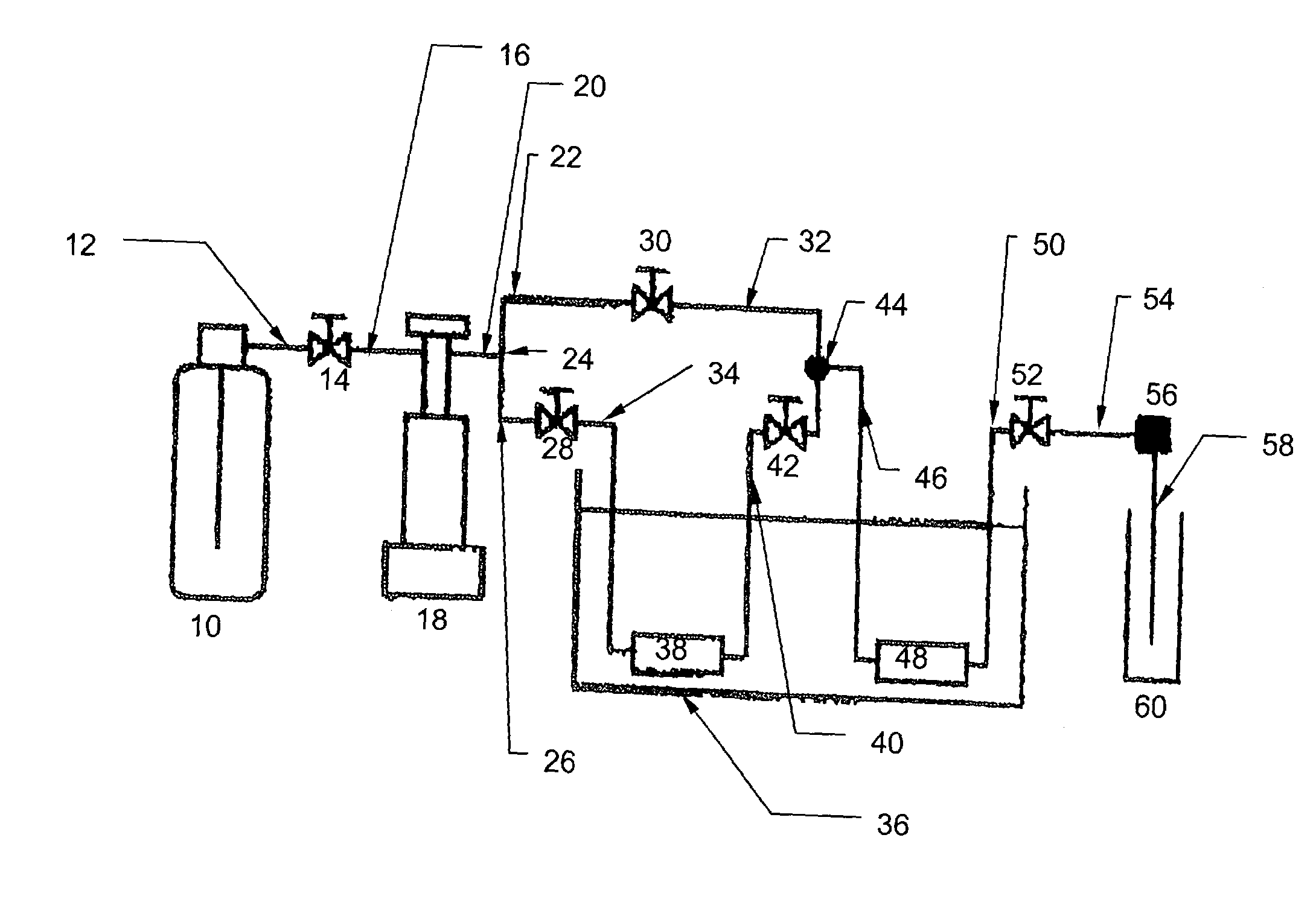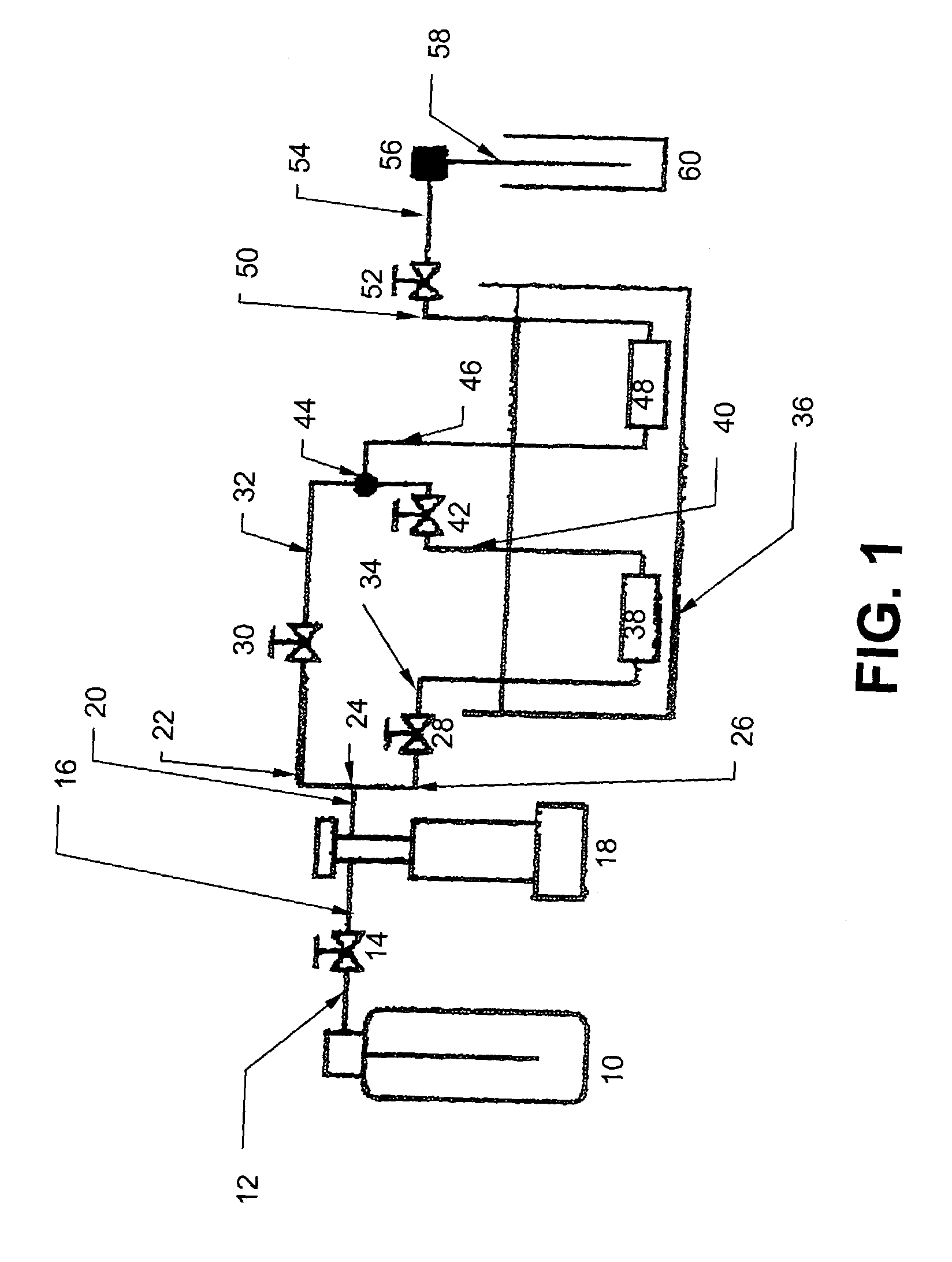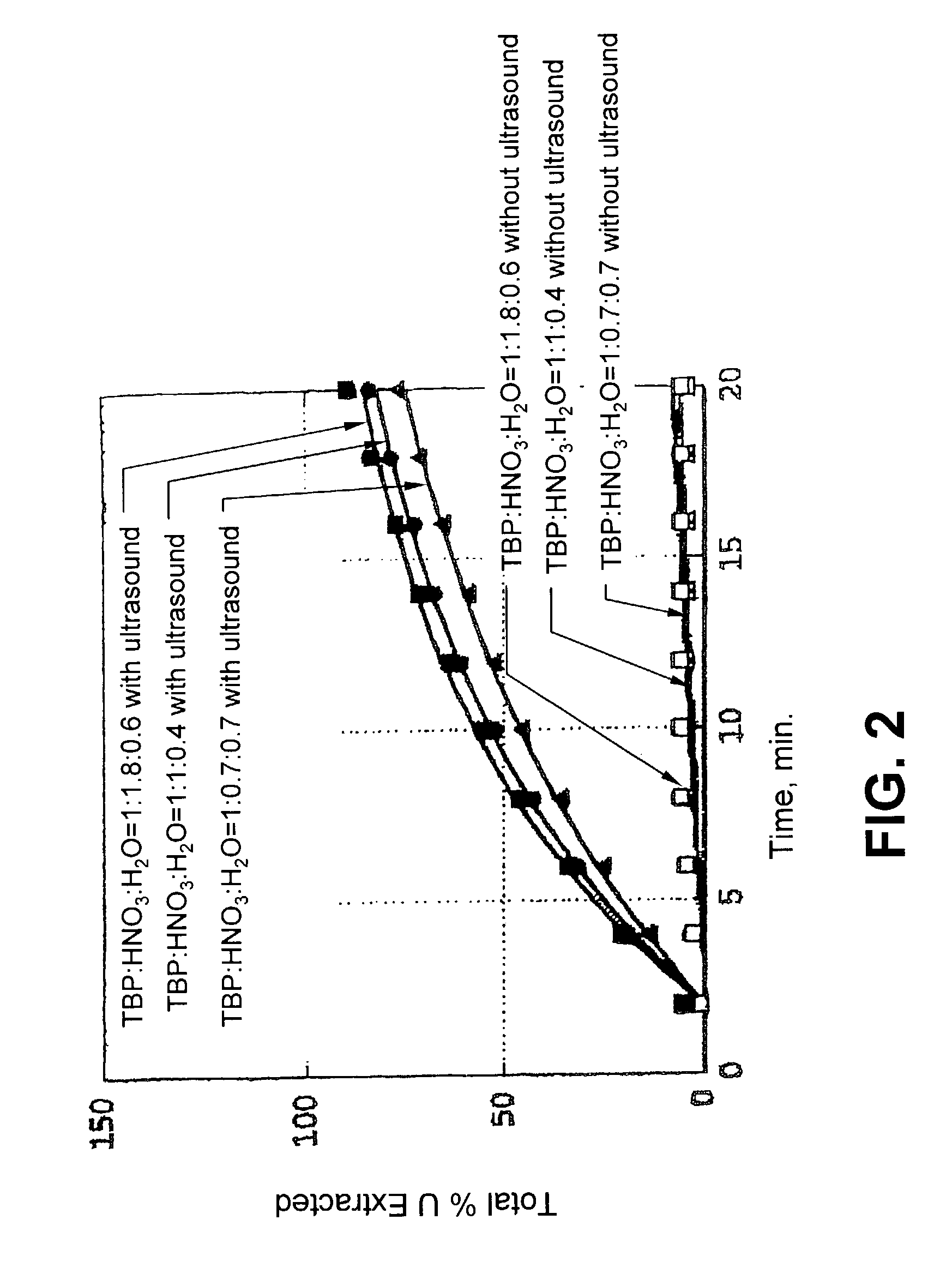Ultrasound enhanced process for extracting metal species in supercritical fluids
a supercritical fluid and ultrasonic enhancement technology, applied in the direction of energy-based chemical/physical/physicochemical processes, water/sewage treatment by ion exchange, water/sewage treatment by osmosis/dialysis, etc., can solve the problems of inability to decontaminate such wastes on an industrial scale, low yield of purified metals, and inability to use current methods for decontaminating such wastes. , to achieve the effect of reducing the rate a
- Summary
- Abstract
- Description
- Claims
- Application Information
AI Technical Summary
Benefits of technology
Problems solved by technology
Method used
Image
Examples
example 1
Ultrasound-Enhanced Dissolution of UO2
[0041]A particular embodiment of an improved metal dissolution technique is as follows and described in Enokida et al., “Ultrasound-Enhanced Dissolution of UO2 in Supercritical CO2 Containing a CO2-Philic Complexant of Tri-n-butylphosphate and Nitric Acid,”Ind. Eng. Chem. Res. 2002, 41(9), 2282–2286, which is incorporated herein by reference.
[0042]In the system described below, the TBP / HNO3 / H2O complex probably extracts UO2 by oxidation of U(IV) in solid UO2 to U(VI), forming UO22+, followed by the formation of UO2(NO3)2.2TBP in SF-CO2. UO2(NO3)2.2TBP is highly soluble in SF -CO2, exceeding 0.45 mol L−1 in CO2 at 313 K and 20 MPa. It is the most soluble metal complex in SF-CO2 reported in the literature thus far.
[0043]The supercritical fluid system is illustrated in FIG. 1. As described further below, this system, and that shown in FIG. 5, functioned both as a dynamic extractor and a static extractor. Pressurized CO2 (99.9%, Praxair, San Carlos...
example 2
An Apparatus for Ultrasound Enhanced Dissolution of Uranium Oxides in SF-CO2
[0061]In this embodiment, an apparatus (shown in FIG. 5) and method are provided for enhanced dissolution of uranium oxides by the application of ultrasound to an SF-CO2 reaction system containing HTTA.
[0062]The uranium oxides included depleted UO3 (Alfa AESAR, Ward Hill, Mass., 99.8%), UO2 (Alfa AESAR, 99.8%), and U308 (NBS Standard Reference Material). The ligands HTTA and TBP also were obtained from Alfa AESAR and used without further purification. SFE-grade carbon dioxide (Air Products, Allentown, Pa.) was used for all extractions. Extracted products were collected in a collection system 144 containing a trap solution (ACS-grade trichloromethane obtained from Fisher, Fairlawn, N.J.) through the restrictors 140 made from 150 mm lengths of deactivated fused silica, 50 μm i.d., purchased from Polymicro Technologies (Phoenix, Ariz.), and a restrictor heater 138. Uranium was back extracted from the trap solu...
example 3
Dissolution of UO3 in SF-CO2 Using the Apparatus of Example 2
[0065]The direct reaction of UO3 with HTTA in large excess efficiently occurred in a static reaction cell system. Although high conversion efficiency to UO2(TTA)2.H2O was observed, the complex was not efficiently transported from the cell 126 in SF-CO2. Instead the complex remained in the reaction cell as a powdery, orange-colored substance. It was necessary to add TBP to the extraction system to enable transport of the uranium complex. Because TBP is a stronger Lewis base than H2O, it can replace the coordinated H2O molecule to form the adduct UO2(TTA)2.TBP, which is quite soluble in SF-CO2.
[0066]The effect of ultrasound application on the dissolution of UO3 in a SF-CO2 stream containing TBP and HTTA is illustrated in FIG. 6. The reaction conditions were 60° C. and 150 atm using an SF-CO2 stream modified with 0.041M HTTA and 0.18M TBP. In the absence of ultrasound the dissolution rate was slow and the efficiency was poor,...
PUM
| Property | Measurement | Unit |
|---|---|---|
| pressure | aaaaa | aaaaa |
| temperature | aaaaa | aaaaa |
| frequency | aaaaa | aaaaa |
Abstract
Description
Claims
Application Information
 Login to View More
Login to View More - R&D
- Intellectual Property
- Life Sciences
- Materials
- Tech Scout
- Unparalleled Data Quality
- Higher Quality Content
- 60% Fewer Hallucinations
Browse by: Latest US Patents, China's latest patents, Technical Efficacy Thesaurus, Application Domain, Technology Topic, Popular Technical Reports.
© 2025 PatSnap. All rights reserved.Legal|Privacy policy|Modern Slavery Act Transparency Statement|Sitemap|About US| Contact US: help@patsnap.com



